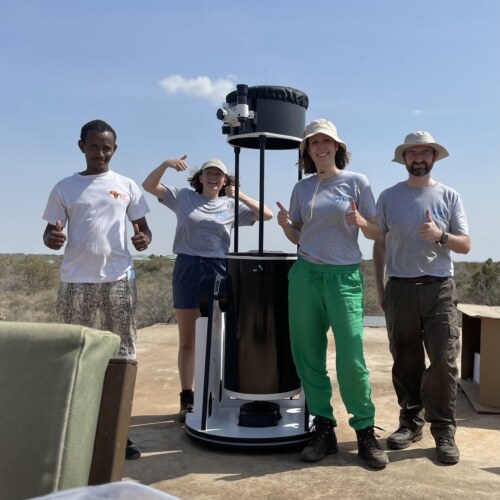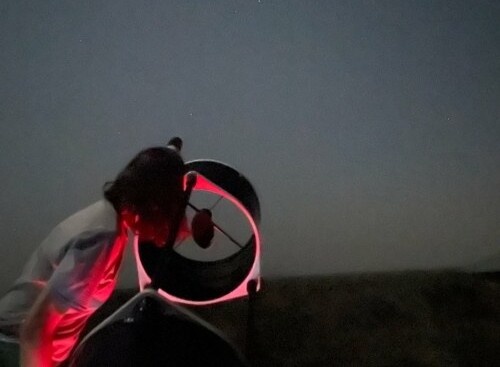By Mary Mwendwa
Nairobi, Kenya: Prof. Colin Snodgrass of the University of Edinburgh has installed a 0.4m telescope at Turkana Basin Institute (TBI’s) Ileret facility. It is located in the far north of Marsabit County near the Ethiopian Border.
This effort was initiated by the Kenya Optical Telescope Initiative Richard Vaughan and Susan Murabana. The two have been advocating for increased optical astronomy in the country – as we have incredible night skies but do not make the most of this resource for research or tourism.
The local academic partner is Technical University Kenya Prof. Paul Baki and four of their students joined the Edinburgh team in Ileret.

The main focus of this initial effort was to observe the DART impact. Kenya is at one of the few longitudes where it was visible, to increase the amount of data collected about the effects and in order to understand asteroid systems better.
The secondary goal of the project was to use this event to provide education and outreach to local university students and to local primary school children.
The students from TUK will be trained on how to use the telescope and will be conducting research for their own projects, a TBI staff member has also been trained in how to use the equipment.
The team from Edinburgh gave a talk at the local school and class 8 students were able to look through the telescope and see planets etc.
The long-term goal is to demonstrate that there is massive potential for impactful, high-quality astronomy research in order to get more investment in infrastructure and capacity building.
NASA’s DART Mission (Double Asteroid Redirection Test) is the first of its kind, a planetary defense mission aimed at testing asteroid deflection through impact. The test will be carried out on a binary asteroid system, which has a big asteroid (Didymos 780m) with a smaller moon (Dimorphos) orbiting it.
These will imitate the Sun and a smaller asteroid, on course to collide with the Earth. The spacecraft, which NASA launched at the end of last year, will collide with the moon at the end of September this year. Astronomers will then monitor the orbit of the moon to measure how effective this ‘kinetic impactor’ experiment was.
None of the large observatories in the Americas will be able to see the actual impact until 4 hours later due to it being daytime when the collision happens. This is where this portable telescope comes in.
The team will be able to observe the impact as it happens and be able to see anything that comes from the actual collision such as dust. After the impact, the telescope will also be able to monitor the orbit of the moon using its lightcurve.














